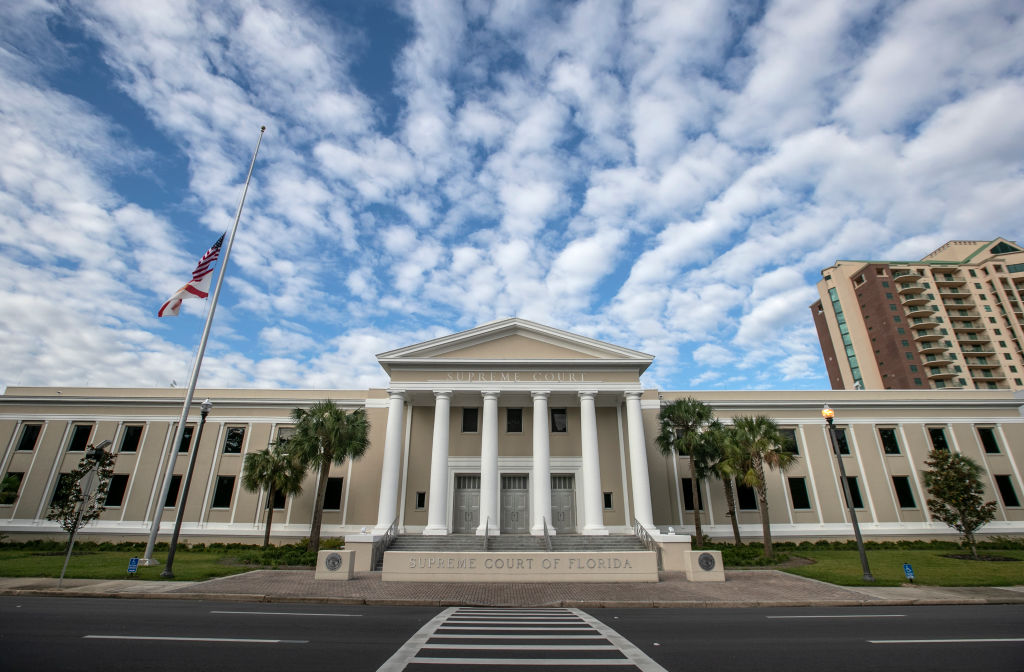TALLAHASSEE (CBSMiami/NSF) – House Republicans advanced a map for new congressional lines Friday that includes a disputed North Florida district closer to what the Senate proposed than what Gov. Ron DeSantis has sought.
Still, the Republican-controlled House Congressional Redistricting Subcommittee voted along party lines to approve a plan (PCB CRS 22-01) that could add two seats for the GOP in Florida’s congressional delegation.
Democrats and other critics contend the proposed map would not fully reflect the growth of Hispanic and Black populations in Central Florida and South Florida.
But subcommittee Chairman Tyler Sirois, R-Merritt Island, said the House has engaged lawyers and outside experts to provide assistance with statistical analysis in anticipation of litigation.
“This is a legally sound map. It’s a constitutionally compliant map,” Sirois said.
The proposal would need approval from the House Redistricting Committee, which is scheduled to meet Thursday before it could go to the full House.
Ultimately, the Senate and House will have to reach an agreement on a congressional map that then would go to the DeSantis.
Friday’s meeting came after the once-a-decade process of redrawing congressional districts stalled because of issues involving Congressional District 5, a minority-access district that stretches across a swath of North Florida and is held by Democrat Al Lawson.
The Senate passed a proposed map that largely would keep the same design of the district, which goes from Jacksonville to the west of Tallahassee.
But DeSantis offered a proposal that would have dramatically changed the configuration and then sought an advisory opinion from the Florida Supreme Court.
The Supreme Court last week rejected DeSantis’ request for an opinion, a move that restarted the House’s map-drawing efforts.
DeSantis has refused to back down from his push to redraw the North Florida district, though the House’s new proposal is similar to the Senate’s design.
Robert Popper, a senior attorney for the conservative Washington, D.C.-based group Judicial Watch, appeared at Friday’s meeting on behalf of DeSantis and said the House’s proposal for the district “will torpedo the ability of Florida to submit a set of districts that it can call narrowly tailored, if the district is submitted, I believe, in its present form.”
As lawmakers redraw districts, they have to take into account the 2010 “Fair Districts” constitutional amendments, which set guidelines for reapportionment. In his request to the Supreme Court, DeSantis sought an opinion on a “non-diminishment standard” in the Constitution that prevents districts from being drawn that will hinder the ability of minority voters to elect candidates of their choice.
“The remedy has to be narrowly tailored,” Popper said as he discussed District 5. “I do not suggest, and my testimony is not to suggest, that the Fair Districts amendment would be unconstitutional in all its applications. It absolutely wouldn’t. It could justify a race-based district. It could. My testimony is just that it doesn’t, not with this district.”
DeSantis this week released a second map proposal that would drop the number of districts that historically have elected Black candidates from four to two, with both in South Florida.
It also would bump up the potential number of Republican districts — based on 2020 voting patterns — from 16 to 20, according to data from the online site Redistricting & You.
The House proposal could increase the Republican seats by two to 18.
The state’s overall number of districts is increasing from 27 to 28 this year because of population growth over the past decade.
The Senate’s proposal, which was approved last month, could lead to 17 Republican seats.
Among the differences between the House and Senate plans are the futures of Central Florida’s Congressional District 7, held by Democrat Stephanie Murphy, and District 10, held by Democrat Val Demings.
Murphy is not seeking re-election this year, while Demings is running for U.S. Senate.
The House would merge most of the two districts, potentially reducing Democrat seats in the Orlando area from three to two, while the Senate would keep most of the existing lines in place.
Both chambers appear to craft the new 28th district in the Polk County area, which has long elected Republicans.
The Senate considered District 10 as a Black-performing district.
The House doesn’t consider it a Black-performing district because of what it views as a population that has remained “stagnant.”
“That is something that will be reconciled with the Senate, but again, according to our analysis, that has not been recognized as a protected district,” Sirois said.
Miranda Galindo, senior counsel with LatinoJustice PRLDEF, contended the proposal fails to take into account an increase in the number of Hispanic voters, particularly in Central Florida.
Galindo also said the House proposal would split dense Latino populations in Hillsborough and Pasco counties and in Hendry and Collier counties, while the Senate map would keep those communities whole.
DeSantis could veto the congressional map that lawmakers ultimately produce.
But Senate President Wilton Simpson, R-Trilby, said he wasn’t “concerned at all” about not completing districts before the June candidate-qualifying period for this year’s elections.
“I presume, and this is completely not been decided on, but I presume we will have conferees (legislative negotiators) that will get together with staff and determine if either one of those maps are singularly the one we want to go with, or do we want to make changes to blend those maps,” Simpson said Thursday. “There will be a process there with which we will allow it to play out and happen.”
(©2022 CBS Local Media. All rights reserved. This material may not be published, broadcast, rewritten, or redistributed. The News Service of Florida’s Jim Turner contributed to this report.)



